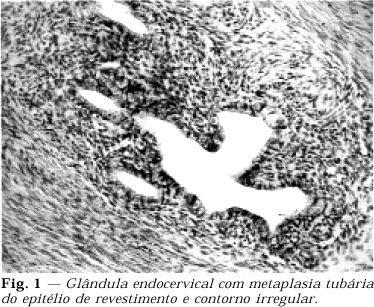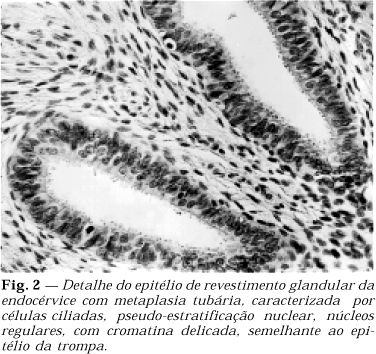OBJECTIVE - Among uterine cervix tumorlike lesions, tubal metaplasia (TM) has been confused with endocervical in situ adenocarcinoma. TM is a benign lesion composed of three cellular types: ciliary, secretory and intercalary ( or peg cell ). Thus, the main purpose of this work is to localize and characterize tubal metaplasia and its relation to other morphological lesions in the cervix. METHODS - Eighteen cervical specimens from 8 cones and 10 hysterectomies with TM were reviewed in order to observe its relative frequency in different segments such as: superior, inferior, surface epithelium and glands. All cases were associated to other neoplasic and non-neoplasic diagnosis. RESULTS: TM was observed in cases with an age span from 24 to 72 years old, with a mean age of 44 years. In most of the cases (83%), TM was found in the superior region of the cervix, but in 61% TM was also found in the inferior region, either on the surface epithelium or in the glands. In 60% of the cases TM was associated with invasive or intraepithelial neoplasia. CONCLUSIONS - In spite of being observed in the higher parts of the endocervix, TM was also detected in the lower segment, where the differential diagnosis with in situ adenocarcinoma is important. Thus, although more frequently associated with neoplasia in this study, it is not possible to determine the real incidence of TM in the cervix. However, morphological characterization of the lesion is very important for diagnostic purposes.
Cervix uteri; Tubal metaplasia; Endocervical adenocarcinoma in situ; Histopathology




